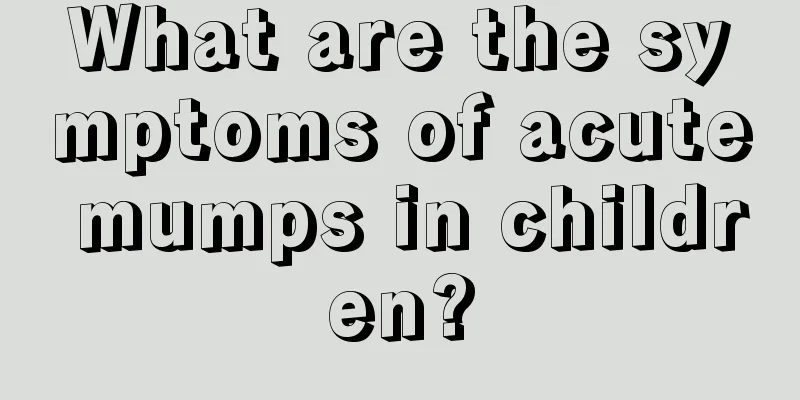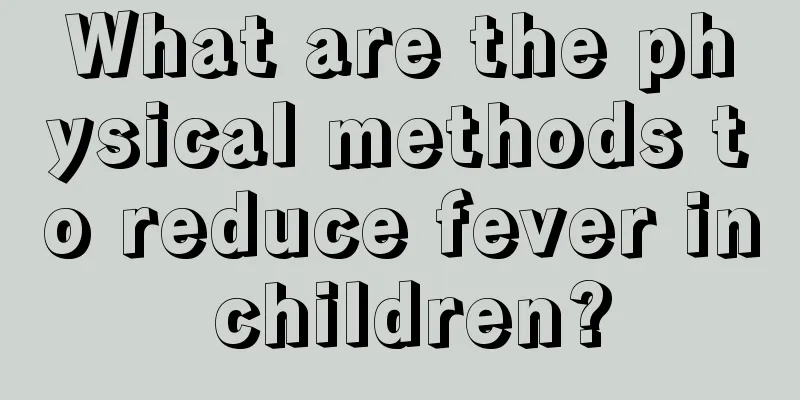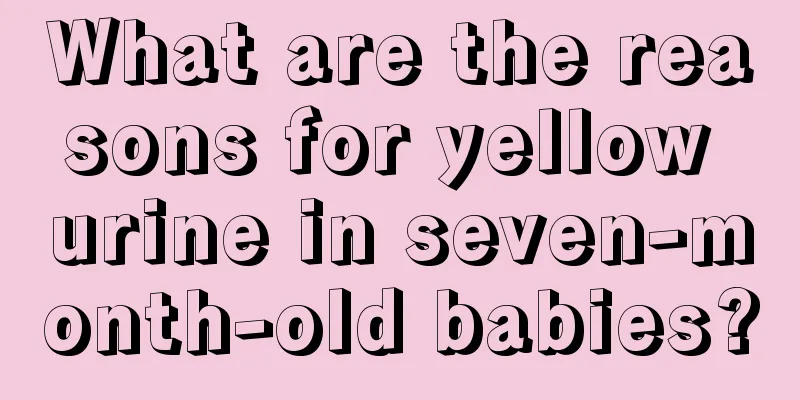What are the symptoms of acute mumps in children?

|
Acute mumps in children is a common disease in children during their growth period. Children with mumps are prone to fever, dizziness, headache, nausea and vomiting, which can easily irritate the children's brain membrane and have a great impact on the children's health. They need to be treated in time. Generally, acute mumps in children will last for about 2-3 weeks, and children need to drink more water at ordinary times. What are the symptoms of acute mumps in children? Clinical manifestations 1. Incubation period 2 to 3 weeks, 18 days on average. 2. Prodromal manifestations The prodromal phase is very short, ranging from a few hours to 1 to 2 days. Common symptoms include fever, loss of appetite, general weakness, headache, vomiting, etc. A small number of children may develop meningitis in the early stages and may experience meningeal irritation signs. 3. Parotid gland swelling stage The parotid gland swells first on one side and then on the other side. There are also cases where only one side swells or there is no swelling of the parotid gland. The swelling is characterized by being centered on the earlobe, expanding toward the surrounding area, with unclear edges, elasticity and tenderness to the touch, and no redness on the surface of the skin. The upper edge of the swelling can reach the zygomatic arch, the posterior edge reaches the sternocleidomastoid muscle, and the lower edge extends to the submandibular area and the neck. The cheek swelling reaches its peak in about 3 to 5 days, then gradually shrinks and generally disappears in about a week, occasionally lasting up to 2 weeks. Sometimes both the submandibular gland and the sublingual gland may swell, with the former being more common. In some cases, only the submandibular gland is enlarged while the parotid gland is not. In some children, the submandibular gland, sublingual gland and parotid gland may never have obvious swelling, and may only show signs of viremia or complications. Redness and swelling may be seen at the opening of the parotid duct. The child feels local distension and hyperesthesia in the parotid gland, which is more obvious when opening the mouth and chewing. The body temperature remains high while the parotid glands are swollen, but the degree of temperature increase and the duration of temperature increase have nothing to do with the degree of parotid gland swelling. The duration of fever varies, ranging from 1 to 2 days in the shortest case to up to 2 weeks in the rarest case. Moderate fever is more common, while low-grade and high-grade fever are rare. About 20% of the body temperatures remain normal. diagnosis When there is obvious swelling of the parotid gland and a clear history of contact, it is not difficult to make a clinical diagnosis if other causes of parotid swelling are excluded. In cases of simple submandibular or sublingual gland enlargement, the diagnosis can be made if there is a clear source of infection and local lymphadenitis is excluded. Clinical diagnosis is difficult in cases where encephalitis occurs before or without parotid gland swelling. The peripheral blood leukocyte count is mostly normal or slightly increased, and the lymphocyte count is relatively increased in the classification examination. Blood and urine amylase levels are mild to moderately elevated, but need to be differentiated from pancreatitis. Serum lipase determination is helpful in diagnosing pancreatitis. Those suspected of having meningitis may undergo a cerebrospinal fluid examination, but if the symptoms are obvious and the diagnosis of mumps is clear, there is no need for a cerebrospinal fluid examination, and mild cases do not require special treatment. To make an etiological diagnosis, virus isolation should be performed from blood, saliva, urine and cerebrospinal fluid. Differential Diagnosis 1. Mumps caused by other viruses It is now known that influenza, parainfluenza, adenovirus, enterovirus, etc. can cause mumps. Initial identification can refer to the epidemiological history and clinical symptoms, and the final identification method is to conduct etiological and serological examinations. 2. Suppurative parotitis It often recurs multiple times, and all are located in the parotid gland on the same side. Suppurative parotitis should be suspected. Pus can be seen flowing out of the parotid duct opening when the gland is squeezed. The local surface skin is red and swollen, with obvious tenderness, unclear surrounding boundaries, and increased peripheral blood white blood cells and neutrophils. It can occur in children of all ages and disappear naturally during puberty. Use of sialagogues (such as chewing gummy candies) to improve saliva flow and antibiotics are effective. 3. Parotid gland swelling caused by other reasons (1) In chronic wasting diseases and malnutrition, the parotid gland may swell. It is usually bilateral, with mild swelling, no tenderness, and no heat sensation on the skin. It exists for a long time and is generally not accompanied by symptoms of acute infection. There is no obvious pain or tenderness in the local area. (2) When the salivary duct is blocked by stones, the parotid gland may swell and may be tender, but there are no symptoms of acute infection. The parotid gland may swell suddenly and then subside quickly, often on the same side. 4. Regional lymphadenitis Acute lymphadenitis is mostly unilateral case, located under the jaw or chin, the lump is not centered on the earlobe, the lymph nodes are initially enlarged and hard, with clear edges and obvious tenderness, and pharyngeal inflammation is often present. There is no redness or swelling at the parotid duct opening. |
<<: What are the typical symptoms of acute nephritis in children?
>>: Three month old baby has scab on the top of his head
Recommend
Children have recurrent oral ulcers
Parents should pay attention to children who have...
When can a baby sit in a stroller?
Every family needs a child. Only with a child can...
How to wean baby off from night feeding? These methods are available
Breastfed babies need to feed many times at night...
Can't eat eggs after leprosy vaccine
Babies need to be vaccinated as soon as they are ...
What should I do if my three-month-old child has a fever of 38 degrees?
The hardest-working people in the world are paren...
What should we do if children have intestinal dysfunction?
Intestinal dysfunction is a very common phenomeno...
Three-year-old girl with precocious puberty
In fact, the incidence of precocious puberty is g...
Causes of dysphagia in newborns
Parents need to provide extra care and health car...
What should be checked when a child has a fever in the blood test?
Children are generally more prone to health probl...
Does baby eczema itch?
After getting eczema, the child will become very ...
Are fevers in babies serious?
People who have babies at home know that some bab...
The impact of precocious puberty on children
The incidence of precocious puberty in children i...
Is it serious for premature babies to have poor digestion?
It is quite common for premature babies to suffer...
At what age is it best for children to take anthelmintics?
For someone like me who was born in the 1980s, wh...
Why are the baby's palms and soles hot and sweaty?
Recently, many parents have discussed that their ...









